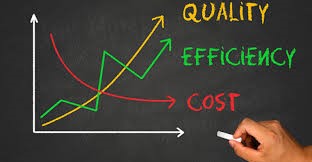Value-engineering in the humanitarian context
Developing new shelter solutions and relief items is part of our everyday work. In the humanitarian sector this process requires a specialist approach, respecting the needs of crisis-affected populations. NRS Relief relies on dedicated design and engineering professionals who work closely with our manufacturing arm. This team has embraced the principles of value engineering, and at the same time applies a beneficiary-centered design approach.
Our design team is headed by Frank Merks, Head of Design, Product development & Engineering, who works on the design and development of new and existing products. In this vital role he works closely with internal stakeholders, such as the business development team, the factory, as well as our clients and supplier. We aim to develop the best possible products for beneficiaries. To achieve this mission, we bridge information from the field with our technical knowledge.
Designing for humanitarian settings
Humanitarian engineering is a niche field of expertise where engineering skills are applied for humanitarian aid purposes. It is defined as ‘design under constraints to directly improve the wellbeing of underserved populations, where constraints are not just physical and economic, but also environmental, cultural, and ethical.’
In simpler terms, the shelter solutions or relief essentials need to be fit-for-purpose. They must be durable and perform under extremely harsh weather conditions. At the same time, all the products are designed with the people and their cultural needs in mind. This beneficiary perspective fits within the framework of a rights-based approach. The items are not simple consumables but contribute to protecting the universal rights to shelter, education, sanitation, and healthcare. Our solutions often provide security and human dignity to displaced populations, enabling family life to continue until a permanent solution is found.
Value engineering
 In this product development process, it is critical to balance cost with function. Therefore, the way we work is driven by value engineering principles. Value engineering is used to solve problems and identify and eliminate unwanted costs while improving function and quality. The aim is to increase the value of our aid solutions, meeting the product’s performance standards at the lowest possible price. All items are procured with public funds. Subsequently, aid actors intend to use their budgets wisely, yet not wanting to compromise on essential quality standards to ensure the dignity of beneficiaries.
In this product development process, it is critical to balance cost with function. Therefore, the way we work is driven by value engineering principles. Value engineering is used to solve problems and identify and eliminate unwanted costs while improving function and quality. The aim is to increase the value of our aid solutions, meeting the product’s performance standards at the lowest possible price. All items are procured with public funds. Subsequently, aid actors intend to use their budgets wisely, yet not wanting to compromise on essential quality standards to ensure the dignity of beneficiaries.
This balancing act has challenged us to identify improvement opportunities before assessing them against a cost-benefit ratio. It is about taking a birds-eye view to be cost-effective and at the same time meeting the desired design objectives. It is a creative, team-based approach that generates alternatives to material selection, configurations of designs, reduction of environmental impacts, and so on.
Value engineering family tents
An example of this approach is the development recently introduced dome-shaped family tents mainly made of polyethylene (PE) materials. You might think, polyethylene, is that not plastic material polluting land and water across the globe? The answer is not that simple. The current family tents that have been deployed for decades and many other tents used in humanitarian relief are made of poly-cotton, because it is durable, affordable and comfortable especially in hot weather.
Over the last decade, humanitarian crises have geographically expanded from primarily hot and hot-humid climate zones to cold and wet climate zones as well. For these types of weather conditions, the current poly-cotton family tent is less suitable. That is why UNHCR and ICRC, in cooperation with NRS Relief and our competitors have developed a new family tent performing in all climate zones. For these tents, we chose polyethylene (PE) fabrics. These materials best meet our environmental goals to reduce water and energy consumption, viewed from the total production and life-cycle perspective of the tents. PE fabrics also allow us to create free-standing, dome-shaped tents that demonstrate excellent performance in harsh weather conditions. Moreover, they provide more comfort for the beneficiaries. With PE fabrics we can engineer properties such as UV resistance, flame resistance and heat build-up embedded in the fabrics instead of coatings and use fabrication techniques such as welding. Lastly, once the tents reach their end-of-life, they can be recycled into other useful products.
This tangible example showcases how we can combine the principles of humanitarian and value-based engineering to make a difference. Innovation and creativity are about big and small ideas, about teamwork and never forgetting about the purpose of the work we do – meaningfully improving the lives of displaced people.







